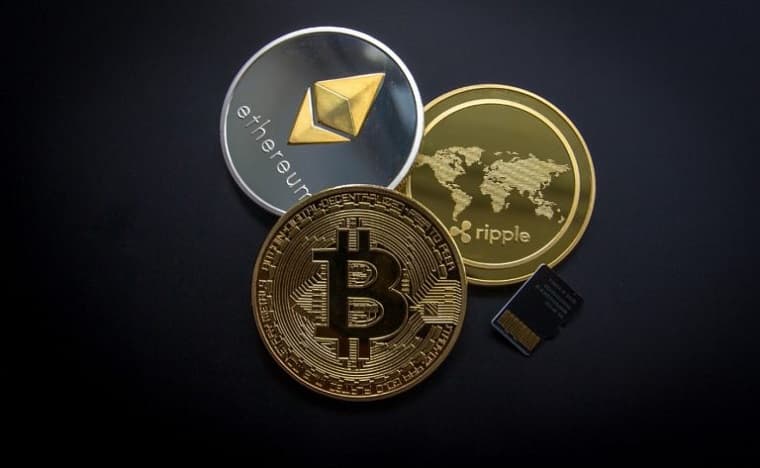
Cryptocurrencies have been revolutionizing the trading industries for more than a decade. Andfor the last few years, blockchain based cryptocurrencies have seen a lot of evolution over the course of time. And along each step, the value and fame of each crypto product has exponentially increased.
Blockchain is an easy story and it can be defined as a data structure that contains transactional documents and ensures safety, accountability and decentralization.Let me explain this in simpler words: Blockchain is a distributed database that maintains ‘blocks’ of records and linked togetherin a linear ‘chain‘connectivity.
The revolutionary technology impacting different industries miraculously was introduced in the markets with its very first modern application, cryptocurrencies. The first cryptocurrency, Bitcoin, was commonly regarded as the first generation of blockchain.
Since its inception, cryptocurrencies were very common. When it comes to Bitcoin, Ripple, and the many other cryptos the majority of those who do not have precedent are at least fascinated by their success. Others are absolutely fascinated with the idea and chart minute-by-minute positions for their lives. It seems obvious, however, that some people are more involved than others in cryptos, but what are they and why have they earned such admiration?
Why Are Cryptocurrencies Popular?

In recent years, this blockchain technology has been evolving fast from the original Bitcoin protocol to the second generation Ethereum platform to today, where we’re in the process of building the third generations of blockchain. In this evolution, we can see how the technology is evolving from its original form as essentially just a database to becoming a fully-fledged globally distributed cloud computer.
Imagine this: You have a piece of information to be transacted from your computers. In a blockchain, a person inside the network verifies the information you have sent and authorize the transaction. This concept is known as ‘proof of work’. Sure, the actual working is much more complicated with thousands of nodes and blockchain ledgers inside the network, however, this is the basic concept of blockchain explained.
Ok, I know what you’re thinking; Why is it so popular?
The reason is thatthe underlying technology, blockchain ledger, is one of the world’s safest and most reliable data verification technologies. Once an information is stored on a blockchain, it is extremely difficult to change or alter it. Each transaction on a blockchain is secured with a digital signature that proves its authenticity. Due to the use of encryption and digital signatures, the data stored on the blockchain is tamper-proof and cannot be changed. Sounds impressive, right?
It gets better!
Blockchain is completely decentralized and open-source. Unlike traditional public ledgers which use a single center point controlling the flow of information throughout the network, Blockchain has a decentralized Peer-to-Peer (P2P) network structure which ensures more reliability.
Blockchain technology allows all the network participants to reach an agreement, commonly known as consensus. All the data stored on a blockchain is recorded digitally and has a common history which is available for all the network participants. This means if a single connection is lost, the network will remain safe and secure.
Here’s the deal: The development of such a technology has inspired an innovative prospect of technology boom in the future. The development of a global distributed computer, a massive globally distributed cloud computing platform on which we can run any application at the scale and speed of today’s major websites with the assurance that it has the security resilience and trustworthiness of modern blockchains.
Qualities of Bitcoins and Why is it so Popular?

The first cryptocurrency was conceptualized in 2008 by an anonymous group, Satoshi Nakamoto. The concept and technicalities are described in an accessible white paper, Bitcoin, a peer-to-peer electronic cash system. The invention of the blockchain for the Bitcoin made it the first digital currency to solve the double spending problem without the need of a trusted authority or central server. Let’s take a look at the qualities of the system in detail.
1. Distributed Public Ledger
Every single person on the network has a copy of the ledger. There is no single centralized original copy. Ledger here means the copy of all the transactions that ever happened.
Blockchain is a distributed database that stores all the Bitcoin transactions that have ever happened in the history of Bitcoin. This ensures that no one person can make changes to the ledger because everyone else will immediately flag it as corrupt.
2. Hash Encryption
Everything stored on the Blockchain is encrypted. This way, everyone is able to see all the transactions but at the same time, no one will know which of those accounts belongs to you.
Isn’t this exactly what we expect a banking system to be?
3. Proof of Work
Proof of Work is a concept invented in Bitcoin Blockchain wherein the miners (special users of Bitcoin) will validate transactions by solving a complex mathematical puzzle called Proof of Work.
Technically, there is a hash target value designated to every block before time. Miners club together a set of unverified Bitcoin transactions (around 250) into one block, compute its hash and then begin a race to find a specific set of characters called Nonce.
The total hash obtained from the hash of the previous block, transaction data, and the nonce has to match the final pre-assigned target hash value. It is this Nonce which is computationally extensive. Only people with huge computational computing power and electricity are able to solve it in 10 minutes on average.
4. Incentives for Validation
The most interesting part of Bitcoin is Bitcoin Mining. It is the concept in which certain users do a piece of work and are rewarded with 12.5 Bitcoins (BTC) per block. Each block takes on average about 10 minutes to mine.
This incentive is given for the efforts in computation and to cover the electricity and infrastructure costs required to achieve it. Currently, large pools control about 10-20% of global mining power and generally only these pools are successful in mining Bitcoins.
Risks of Cryptocurrencies

Just like any other technology, there are downsides or potential risks for cryptocurrency too. Cryptocurrencylike Bitcoin depends on mining, and once the incentives for mining disappear, noone knows if the cryptocurrency in question will continue to have consensus on the digitalregister. They are over 400 cryptocurrencies and the numbersare increasing on a dailybasis. But most of them are in the graveyard.
So, as they say, “let the buyer beware,” because what you own may just be worthlessonce there are doubts about the blockchain. It seems that if the cryptocurrency exhaustsmost of their coin supply too fast and too early, the probability of the coins dying ishigher. For some coins, it is difficult to know who is behind them and whether therecould be a backdoor that allows someone to control the system. Cryptocurrency withunknown developers has a higher probability of being buried in the graveyard.
The blockchain may come under attack as well. The blockchain serves as a proof ofthe sequence of events as well as proof that it came from the largest pool of computingpower. As soon as the computing power is controlled by nodes that are cooperating toattack the network, they may produce the longest chain of their choice creating doubtsabout the validity of the blockchain. This can easily happen once the interest on a particularcurrency wanes and the number of miners shrinks, which opens up the possibilityof having a few blockchains in concurrent existence. Once there is any doubt of the accuracyof the blockchain, even if it was subsequently corrected, the coin will be heading forthe graveyard.

When there are no new coins to reward the miners, the system is unlikely to continue.Once no new coins are issued as the mining reward, then the miners are expected to berewarded purely by transaction fees. This can be a problem. On the other hand, if the feesare increased too quickly or to an unreasonable level, interest on the coins will wane as well. Historically, there has always been a huge demand and supply gap as these digital currencies grew which have contributed to attract a lot of traders to invest in the technology.
Cryptocurrencies are a great way for people to conduct international financial transactions online without the hassle of having to deal with interference from financial institutions and governments. Sometimes, even when you are conducting legal transactions — such as funding your online casino account — financial institutions may deny the transaction.
This isn’t fair to many people. They aren’t looking to do anything illegal, but they are still being denied the use of their hard-earned money because their financial institution decided to put a broad ban on the practice.
This is where a good cryptocurrency can help. You can buy cryptocurrency and then use it to fund your legal online casino account. You can also use the cryptocurrency for conducting other transactions online, making it a win-win no matter what you are looking to do.




